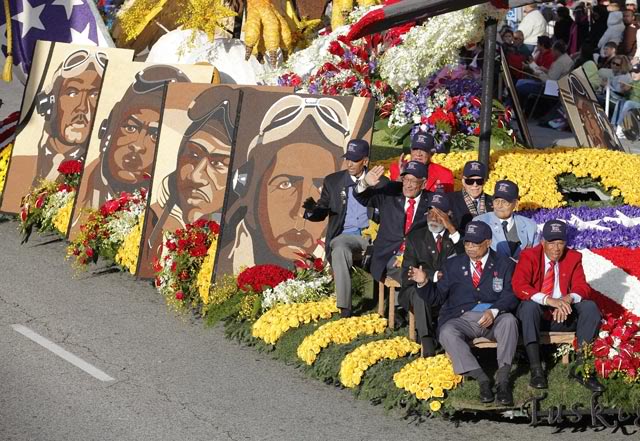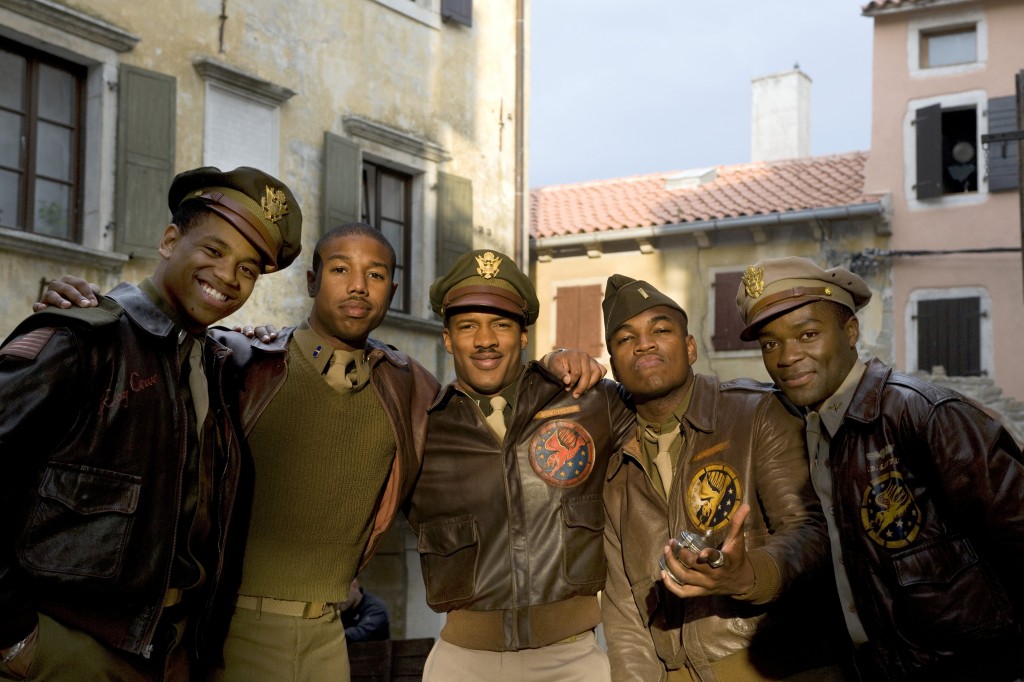Features: Red Tails
By Teryl Warren
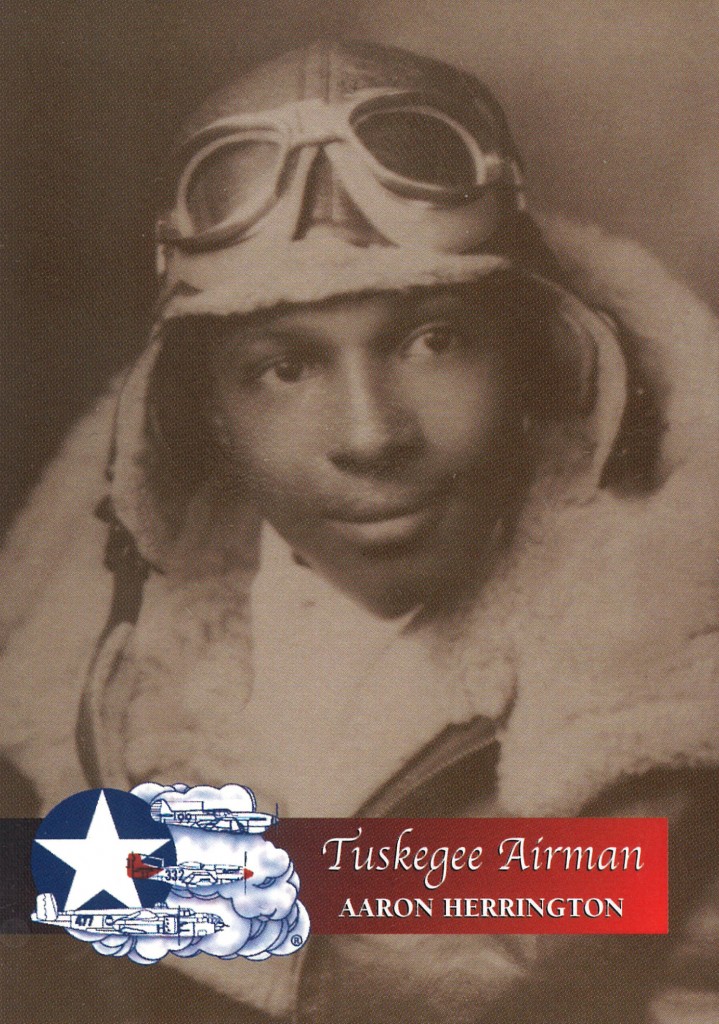 They hailed from nearly every city in America. Some were drafted into the military, most were college-educated, and all of them were young, talented and shared a dream of showing the world the heights to which they were capable of soaring.
They hailed from nearly every city in America. Some were drafted into the military, most were college-educated, and all of them were young, talented and shared a dream of showing the world the heights to which they were capable of soaring.
It would be decades before their country would rightfully honor their sacrifice and service, and more than fifty years before Hollywood would memorialize their struggle on celluloid. But now, at long last, it appears that the world has finally come to celebrate and recognize some of the Civil Rights Movement’s greatest and most courageous heroes: the Tuskegee Airmen.
Aaron Herrington traveled to Moten Field, Tuskegee Institute to begin pre-flight training with his young bride, Maycie, in May of 1943. Herrington– who would ultimately rise to the rank of Captain –graduated as a 2nd Lt. Single Engine Pilot on May 23, 1944, a member of Class 44E. Since Aaron Herrington’s passing on October 1, 1995, his widow, Maycie Herrington, has proudly carried on his legacy. We recently sat down with Mrs. Herrington to learn more about her – and her husband’s experience – as member of one of the United States’ military’s most elite groups.
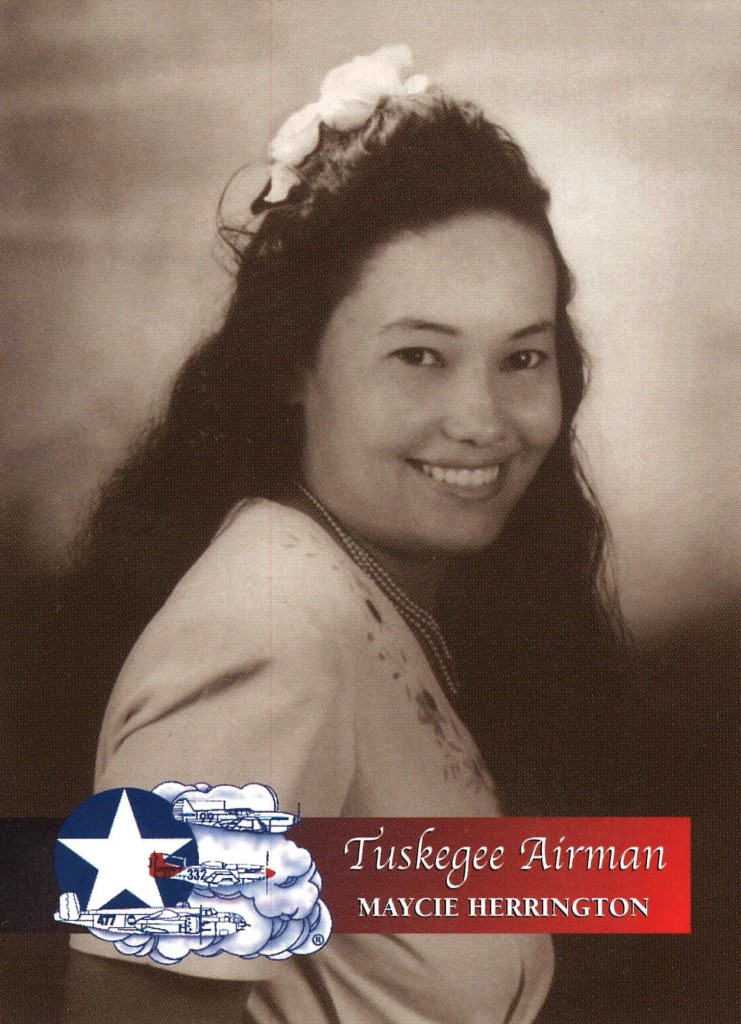 They met at and fell in love at St. Augustine’s college in Raleigh, NC. Raleigh was Maycie’s hometown, and she had grown up understanding some of the social norms of Southern living in the 1940’s. But Aaron, who was originally from Chester, PA, like many African-Americans from the North, had to adjust to the harsh realities of life in the segregated South upon their arrival at Tuskegee.
They met at and fell in love at St. Augustine’s college in Raleigh, NC. Raleigh was Maycie’s hometown, and she had grown up understanding some of the social norms of Southern living in the 1940’s. But Aaron, who was originally from Chester, PA, like many African-Americans from the North, had to adjust to the harsh realities of life in the segregated South upon their arrival at Tuskegee.
“The pilots were all Colored, and all of the flight instructors were White. Everything was segregated,” Mrs. Herrington, who worked on the base with the Red Cross, told us. “We didn’t even go into [nearby] Montgomery because we feared the police would pull us over.”
For many people living in the United States today, the idea of such overt racial hostility is unfathomable. What is even more incredible, though, is that, despite being treated unfairly, the men remained steadfast in their desire to serve.
“Whenever they were asked why they wanted to be there,” Mrs. Herrington said,” They’d always say, ‘This is my country, and I want to fight.’”
And while the Airmen had more than their share of adversaries, there were some who fought for their fair treatment, as well. After First Lady Eleanor Roosevelt’s highly publicized visit to the base, “the experiment” soon gained support from all over the nation.
Tuskegee Army Air Field commander Brigadier General Noel F. Parrish famously fought to desegregate his troops and improve relations between the town of Tuskegee’s residents and the men stationed on the base. In combat, known by the red tails of the planes they flew, the Tuskegee Airmen soon also became highly sought after bomber escorts, as their success in averting enemy attack became legendary.
And, of course, President Harry S. Truman will be forever remembered for, after the program at Tuskegee had proven successful, ultimately integrating the armed forces.
“That was a huge victory for us, and President Truman deserves a lot of credit for doing that,” Mrs. Herrington said.
By the end of World War II close to 1,000 pilots had been trained in Tuskegee. Yet, despite earning the respect of their peers and their popularity in the African-American community at-large, Mrs. Herrington told us that none of the men could find employment as aviators in the private sector.
“The commercial airlines didn’t hire Colored pilots at that time,” she shared.
After leaving Tuskegee in 1945, Aaron Herrington and his family relocated to Long Beach, CA, where both he and his wife would go on to work for more than thirty years in social work, and boast a family consisting of two daughters and five grandchildren.
The road to recognition has been a long journey for the Tuskegee Airmen and their loved ones. In 1995, the HBO film The Tuskegee Airmen introduced the aviators’ story to new generations of cable audiences. And Mrs. Herrington was there, in Washington, D.C. when, on March 29, 2007, dignitaries like Nancy Pelosi, Colin Powell and then-President George W. Bush honored the Tuskegee Airmen (and their widows) with the Congressional Gold Medal.
In January of 2009, President Barack Obama hosted the Tuskegee Airmen as part of his Inauguration festivities – an event which Mrs. Herrington, who was recovering from a stroke at the time, was unable to attend.
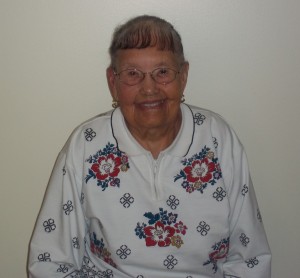 At 93 years young, Maycie Herrington still beams when she speaks of her days with her husband at Tuskegee. She lovingly maintains a veritable library of news articles and poignant photos that memorialize an era more than sixty years gone by. She continues to preserve her husband’s legacy by attending events celebrating the Airmen’s contributions, conducting interviews to discuss their accomplishments, and through her faithful service as a member and former Secretary of the Los Angeles chapter of Tuskegee Airmen, Inc.
At 93 years young, Maycie Herrington still beams when she speaks of her days with her husband at Tuskegee. She lovingly maintains a veritable library of news articles and poignant photos that memorialize an era more than sixty years gone by. She continues to preserve her husband’s legacy by attending events celebrating the Airmen’s contributions, conducting interviews to discuss their accomplishments, and through her faithful service as a member and former Secretary of the Los Angeles chapter of Tuskegee Airmen, Inc.
In addition to encouraging new generations of young people to learn how to fly, the Los Angeles chapter of Tuskegee Airmen, Inc. successfully facilitated, in conjunction with the West Covina Rose Float Foundation, the presence of the Tuskegee Airmen float in the Tournament of Roses Parade in 2010. (pictured below)
On January 20th, famed producer George Lucas’ highly anticipated film Red Tails starring Terrence Howard, Cuba Gooding, Jr., Nate Parker and Michael B. Jordan will mark yet another chapter in the Tuskegee Airmen’s history.
When the film hits the theaters, the eyes of the nation – and at least one person who actually lived the story – will be watching. “I’m looking forward to seeing the new movie [Red Tails],” Mrs. Herrington told us. “I hope the film honors them.”
As we anxiously await the release of Red Tails, we, here at Wiles, would like to take a moment to honor the Tuskegee Airmen and their families, as well.
About Tuskegee Airmen, Inc.: (TAI) is a non-profit organization with 55 chapters nationwide dedicated to:
1. Honoring the accomplishments and perpetuating the history of African-Americans who participated in air crew, ground crew and operations support training in the Army Air Corps during WWII.
2. Introducing young people across the nation to the world of aviation and science through local and national programs such as Young Eagles and TAI youth programs and activities.
3. Providing annual scholarships and awards to deserving individuals, groups and corporations whose deeds lend support to TAI’s goals. TAI also gives awards to deserving cadets in the Air Force Reserve Officer Training Corps.
From tuskegeeairmen.org
To locate a chapter in your local area, and to learn more about the Tuskegee Airmen, please visit: www.tuskegeeairmen.org
